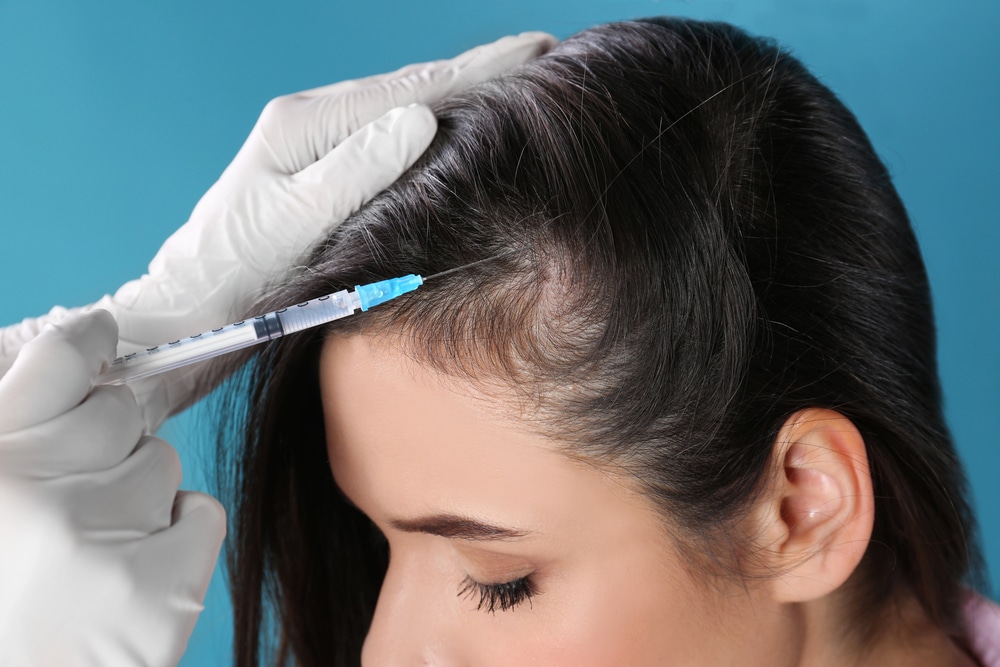Article At A Glance
- Adhering to your surgeon’s specific post-operative instructions is vital for ensuring a successful recovery.
- Practices like keeping your head elevated and using cold compresses can effectively reduce swelling and enhance comfort.
- Gentle scalp care, avoiding overexertion, and monitoring for signs of infection are key to fostering optimal healing.
- Follow-up appointments play a crucial role in tracking recovery progress and ensuring long-term results.
Hairline lowering surgery, also known as hairline reshaping surgery or surgical hairline advancement, is an effective solution for achieving balanced facial proportions and a more confident appearance. While the procedure offers significant aesthetic benefits, the recovery process is just as crucial as the surgery itself.
Proper post-operative care has a direct impact on your healing and the final results of the procedure. Therefore, it is essential to focus on daily habits and follow the practices recommended by your surgeon.
If you are preparing for or recovering from hairline reduction surgery, this comprehensive guide will provide important tips to help you heal quickly and comfortably.
Follow Your Surgeon’s Instructions
The most important piece of advice for anyone recovering from hairline advancement surgery is to follow their surgeon’s specific instructions. Post-surgical care plans are highly individualized and tailored to your unique anatomy and recovery needs.
Your surgeon will provide detailed guidance on how to protect the surgical site, clean the area, and reduce swelling. For example, some surgeons may recommend avoiding direct water contact with the incision for the first few days, while others might permit gentle rinsing with specific products.
Even small details, such as the position in which you sleep, can significantly impact your recovery. Therefore, it’s crucial to adhere closely to these instructions. Any deviations could delay healing and potentially increase the risk of complications, such as scar formation or infection.
Keep Your Head Elevated
A simple yet effective way to minimize swelling and discomfort after hairline reshaping surgery is to keep your head elevated. Swelling is a natural part of the recovery process, but you can manage it by making small adjustments, such as propping your head on extra pillows while you sleep.
Elevating your head above heart level helps improve circulation and prevents fluid buildup around the surgical site. It also reduces pressure on the incisions, making it an essential part of ensuring optimal healing during the first week after surgery.
Apply Cold Compress
Cold compresses can help relieve swelling and bruising, which are both common after hairline reduction surgery. To soothe discomfort and reduce inflammation, apply a cold pack to your forehead or the surrounding area during the first 48 hours post-surgery.
It’s important not to place the compress directly on the incision sites, as this may irritate the delicate skin while it heals. Instead, wrap the cold pack in a soft cloth and gently place it on your forehead or upper scalp. Limit each session to 15–20 minutes to give your skin time to rest between applications.
Avoid Strenuous Activities
Making temporary adjustments to your daily routine is crucial for a smooth recovery. You should avoid strenuous activities such as heavy lifting, intense workouts, and frequent bending. Physical strain can raise your blood pressure and increase the risk of swelling or reopening incisions, which can delay your body’s natural healing process.
Your surgeon will provide you with a timeline for when it’s safe to resume light exercise, such as leisurely walking. You should gradually reintroduce more vigorous workouts or demanding tasks, always following your surgeon’s guidance.
Take Prescribed Medications
Pain management and infection prevention are crucial aspects of post-surgery care. After your surgical hairline advancement, your surgeon will likely prescribe a combination of pain relievers, anti-inflammatory medications, and antibiotics.
It is important to take these medications exactly as prescribed. For instance, missing doses of antibiotics can increase your risk of infection, while overusing pain relievers may hinder your recovery. If you notice any unexpected side effects or have questions about over-the-counter alternatives, be sure to contact your healthcare provider immediately.
Be Gentle with Your Scalp
After hairline surgery, your scalp becomes especially sensitive, so it’s crucial to handle it gently. When brushing, shampooing, or towel-drying your hair, be careful to use soft motions and avoid tugging near the incision site.
Additionally, it’s important to choose the right scalp care products. Stay away from harsh shampoos, conditioners, or styling products that could irritate the healing skin. Instead, opt for the mild formulations recommended by your surgeon to create a safe and clean healing environment.
Limit Hair Washing
It’s completely normal to feel the urge to wash your hair shortly after surgery, but excessive washing can hinder the healing process. Most surgeons recommend waiting at least 48 to 72 hours before shampooing or until the incisions are no longer delicate or at risk of reopening.
When you do start washing your hair again, be mindful of the water temperature, pressure, and technique. Use lukewarm water and apply shampoo gently with your fingertips, using a patting motion instead of scrubbing. Avoid getting the surgical area excessively wet until your surgeon confirms that it is safe to do so.
Avoid Sun Exposure
UV rays can be harmful during the healing phase. Excessive sun exposure may irritate or discolor the healing incision area, and unprotected exposure can even increase the likelihood of noticeable scarring.
If you’re going to be outside, make sure to keep your scalp covered with a soft hat or scarf. Once the incisions have fully healed, using sunscreen with an SPF of 30 or higher can provide an extra layer of protection. Always follow your surgeon’s advice regarding when to start using sunscreen based on your healing progress.
Watch for Signs of Infection
While complications from hairline reshaping surgery are rare, it’s crucial to watch for signs of infection. Key indicators include persistent redness or warmth around the incision, discharge with an unusual odor, and fever. If you notice any of these symptoms, contact your surgeon immediately to address any potential concerns.
Taking prompt action is essential. If left untreated, infections can hinder healing and negatively affect your overall results. Regularly checking your surgical area in a clean environment can help you quickly identify and resolve any issues.
Attend Follow-Up Appointments
Your aftercare does not end when you leave the operating room. Follow-up appointments are essential for your surgeon to monitor your healing progress and address any questions or concerns that may arise. These appointments are crucial for tracking your long-term results and adjusting your care to suit your specific needs.
During these sessions, your surgeon may provide updates on scar care and recommend additional treatments, such as laser therapy or ointments, to enhance your final results. Missing these appointments could mean losing out on valuable insights and preventive measures.
Trust Your Recovery to Dr. Sidle
Recovering from hairline reduction surgery requires patience, but with the right post-operative care, you can achieve results that meet your expectations. By following expert advice—such as keeping your head elevated and attending all follow-up appointments—you are setting yourself up for a smooth and successful recovery.
At Dr. Sidle’s practice, we prioritize your post-surgical experience as much as the procedure itself. With personalized plans and expert guidance, we are dedicated to ensuring you feel confident and supported throughout each step of your recovery.
Are you ready to begin your hairline transformation? Schedule a consultation with Dr. Sidle at (312) 695-8182 to create a customized surgical and recovery plan tailored to your needs. Together, we will ensure that your recovery is as seamless as the results are stunning. Contact us today!



